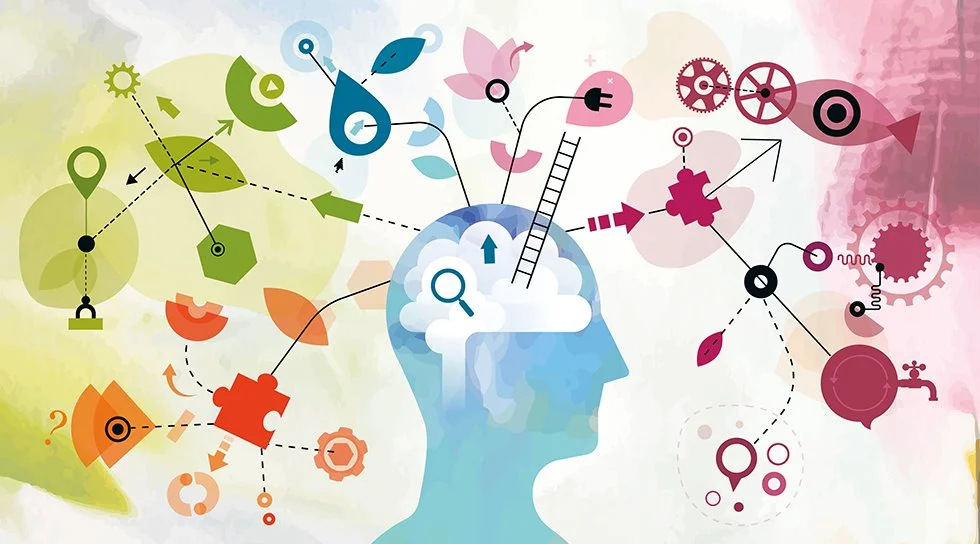EMDR Therapy // Moving through your past so you can be more present
What is EMDR, how does it work, and what might it do for me?
Gotta love a good acronym! There’s a reason therapists don’t use the full name of this growing therapy. First off it’s long! Let’s spell it out: (E) Eye (M) Movement (D) Desensitization and (R) Reprocessing. Clear as mud right? This leads me to the second reason: It’s a terrible name and doesn’t tell you anything about the therapy!
So let me give you the scoop. EMDR is a type of psychotherapy that has been growing in popularity over the past few years because of it’s demonstrated success in treating trauma, anxiety, depression, chronic pain, and distressing life experiences overall.
What makes EMDR different than other therapies? Well, EMDR isn’t a typical talk therapy in that you don’t come to therapy to have a conversation exploring your thoughts, beliefs, or emotions. In truth, EMDR may actually involve very little talking at all and certainly doesn’t require great detail to be recounted. How you ask? As the therapist, I need to know what we are working on, but not the intricacies of it. Most often, a headline or a few words to describe your experience every so often is enough to keep the ship sailing. EMDR is a very internal process. You are supported to revisit key points and memories in your life in order to reprocess them in your mind, not necessarily out loud.
Ok, but if I’m not talking, how does it work? The key feature of EMDR is that it uses what is called bilateral stimulation to move through these challenging memories. Bilateral stimulation is something that triggers both sides of the brain at alternating times. This could be through small vibrating devices that are held in each hand, audio heard through headphones in both ears, or, as the name suggests, your eyes moving as they watch my fingers go from side to side in front of you. This use of bilateral stimulation helps you to remain present while being with a difficult memory in order not get consumed by the strong feelings, sensations, and thoughts that may accompany it.
Let me just put this out there - I’m very aware that this explanation isn’t going to make much sense for most people reading this post! I can remember doing a project on EMDR in my undergraduate studies for Social Work. At that time, I spent hours studying and researching EMDR and still really didn’t know what it was and how it worked! This, my friends, is the beautiful world of experiential therapies (my bread and butter). I can try and tell you all about it, but until you experience it, it will likely remain a bit of a mystery.
So, why take a leap and try something new that still feels a bit confusing and different? Several reasons. (1) It works - There are soooo many studies out there that support the efficacy of EDMR for treatment of a growing array of mental health challenges. (2) Word of mouth - “it’s like magic”, “it made all the difference”, “I tried so many things, but it wasn’t until EMDR that I actually could change my patterns”. These are words from my own mouth, statements I’ve heard from from friends, from acquaintances, and recommendations from other therapists alike. (3) It provides us with more options - Some people just don’t want to talk to somebody about their most painful experiences. Hard to believe right? For many people, the idea of traditional therapy can be retraumitizing as it can be overwhelming to discuss the details of our most disturbing experiences. EMDR opens the door for those who have avoided treatment in the past.
Now lastly, I would remise to not give a better explanation of what EMDR can do. EMDR can change the way you view yourself and how you relate to the world around you. Through working with past memories (as well as present and future situations), you can decouple connections in your brain that are no longer serving you, and create new helpful connections that support you to feel better. For example, let’s say you had a bad fall on a patch of ice and were seriously injured. Fast forward to the next winter and your finding yourself fearful to go outside and are are feeling disconnected and isolated. Use of EMDR in this case could open up more helpful associations, instead of feeling stuck in the belief that the winter is dangerous and to be avoided. With EMDR, instead of when you think about going out, zooming right in on that ever present risk of falling, you might now now associate that memory with a sense that there are caring people in this world, in recognition of the kindness you experienced from the neighbour that was so supportive and caring after your injury, or maybe the belief shifts to how strong you are in recognition of the incredible way your body healed after such an impactful event. Essentially, EMDR can help you to clear out and work through the pain of the memory, in order to allow for recognition of other aspects of it. So it’s not that your memories are erased or that your denying that something difficult happened, but our perception of the memory and how it relates to ourselves shifts to a mindset that allows for growth and healing, instead of being stuck in that habitual pain state.
EMDR Curious?
With all that said, maybe you’re left with more questions, or maybe you want to know if EMDR therapy might be a good fit for you. If that’s true, please reach out and book a free 15 minute consult. I am happy to chat more about EMDR and would love to learn more about you to see how this or one of my other therapy modalities can help you grow into a fuller version of your self.
Learn more about Red Cardinal Counselling and my specialized adult and youth therapy services offered virtually and in Midland, Ontario.

